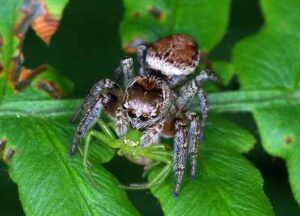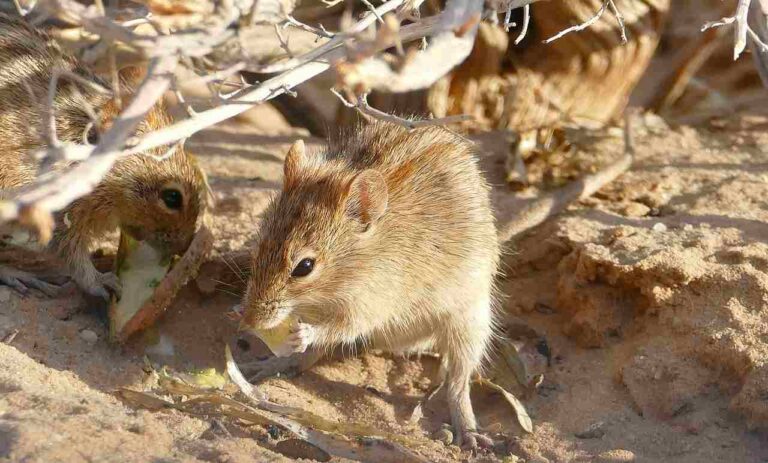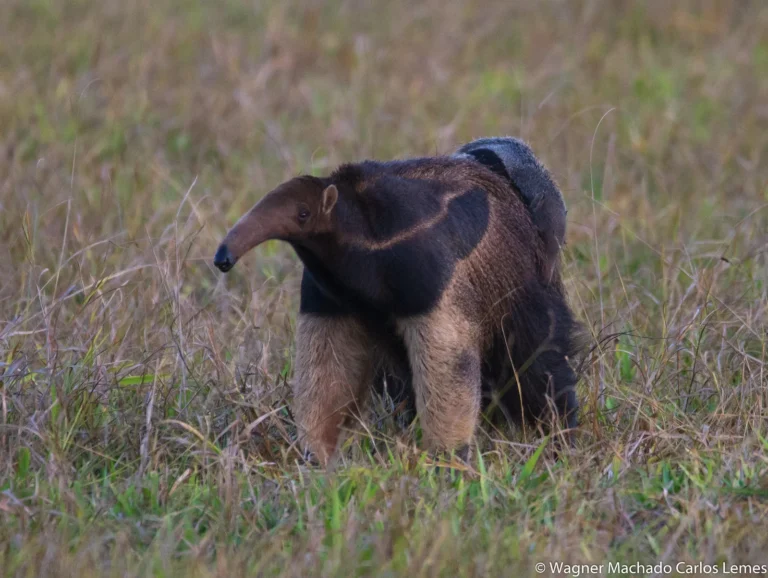7 Temperate Forest Animals and Their Characteristics Discussed
Temperate forest animals are; birds like woodpecker; reptiles like garter snake; rodents like deer mouse; insects like bees; arachnids like mites; canids like coyotes; and apex predators like bears and pumas.
While the above list does not cover all animals that can be found in the temperate forest, it highlights the major groups that play a prominent role in biological and physicochemical processes in the ecosystem.
This article discusses temperate forest animals and their characteristics, as follows;
1). Temperate Forest Birds (as one of the Temperate Forest Animals)
The temperate forest is robust in terms of its variety of conditions and micro-habitats. As a result, multiple species of birds occur in this ecosystem.
Generally, birds play diverse, important roles in temperate forests, which range from seed-dispersal and pollination to regulation of organic populations and energy transfer from one trophic level of the temperate forest food chain to another.
Birds as a group of animals in the temperate forest, has relatively-high species richness and biodiversity, meaning that members with significant biological differences can be found co-occurring in the same biome.
The precise species of birds in a given temperate forest depend on its specific geographical location, altitude, as well as plants and animals present.
Examples of birds in temperate forests are; raptors like hawks, owls; and others such as woodpeckers and thrushes.
Feeding habits vary among temperate forest birds, so that some are nectar feeders, others are frugivorous (feeding on seeds and fruits), some insectivorous, while others are skilled carnivorous predators whose food choices range from reptiles to small mammals [4] [7].
Through their feeding activities, these birds contribute to the pollination of angiosperms, and facilitate the bioenergy-transfer process.
Temperate forest birds exhibit adaptive behaviors like; seasonal migration, whereby they travel long distances to or away from the forest for breeding and/or in search of food.
The presence of abundant vegetation with spatially-varying densities and growth patterns provides temperate forest birds with suitable habitat for nesting, and supports the thriving of regional bird communities.

2). Temperate Forest Reptiles
In temperate forests, reptiles are not as prominently represented as mammals and birds.
However, the reptiles in temperate forests play crucial roles as consumers, food sources, and facilitators of food and nutrient-recycling.
Temperate forest reptiles include lizards and snakes, while some turtles may occur around micro-aquatic ecosystems in temperate forest zones, where they hibernate in periods of extreme cold [3].
Based on ecological constraints, reptiles may develop unique behavioral and physiological adaptations to enable them survive in the temperate forest.
Reptiles are highly-sensitive, and depend on the sustainability of physicochemical conditions and abiotic factors in the temperate forest, for their own continuity.
For example, being ectothermic, reptiles depend on thermal energy from solar radiation to raise their body temperature, and must stay in cool and/or shaded areas when they need to reduce their temperature [2].
These resources are available in the temperate forest, and the absence of extreme physicochemical conditions allows reptiles to survive.
In terms of micro-habitat, the preferences of reptiles in temperate forests vary significantly. The garter snake (Thamnophis) for example, is a ground-dweller and prefers to stay in shaded, rocky patches, close to humid zones or water bodies.
On the other hand, lizards can occur in trees and on the ground.
Dietary tendencies of reptiles in the temperate forest are also diverse. Lizards often feed omnivorously, consuming plant parts, seeds, fruits, amphibians, insects, and even smaller reptiles, in some cases.
The presence of predators prevents reptile populations from growing significantly in temperate forests, as some of these predators may both reptiles and their unhatched eggs.
3). Temperate Forest Rodents (as one of the Temperate Forest Animals)
The relative abundance of micro-habitats and food in temperate forests make them conducive to multiple rodent species.
Rodents in the temperate forest include several kinds of mice, such as; deer mouse (Peromyscus maniculatus), yellow-necked mouse (Apodemus flavicollis), and white-footed mouse (Peromyscus leucopus).
Majority of rodents in temperate forests are inclined toward herbivorous feeding habits, although many also also insectivorous and omnivorous.
Temperate forest rodents are highly adaptable, and may prefer ground habitats in burrows and grassy patches, or above-ground habitats in trees.
Some of their adaptations include color camouflage, burrowing behavior, as well as running and climbing agility. These enable them find food while eluding predators.
The adaptive and resilient nature of rodents make them fairly productive and abundant in temperate forests. They serve as prey to several of the larger consumers.
4). Temperate Forest Insects
Insects comprise another important category of temperate forest animals.
The species of insects in temperate forests are particularly numerous, and very diverse in minute-physiologic details, feeding behaviors, and ecologic roles.
Temperate forest insects like butterflies, moths and bees transfer pollen from the male to female components of flowers, thereby causing pollination [6]. This sustains and enhances plant biodiversity through the formation of fruits and seeds; and indirectly supplies food to the entire ecosystem.
Insects like grasshoppers and caterpillars influence plant growth patterns and diversity through their herbivorous feeding behaviors, while also serving as food for insectivorous and omnivorous organisms.
Other temperate forest insects like mantises are predatory and may consume smaller organisms, including insects.
Beetles are among the detrivorous insects in temperate forests, that facilitate biodegradation and nutrient-cycling through their activities.
Detrivores typically feed on detrital organic materials like plant litter, and breakdown these materials in the process. Their activities release nutrients that help enhance and conserve soil in the temperate forest.
While most are land-based, some temperate forest insects prefer humid, aquatic zones, such as areas surrounding lakes and ponds. This group includes dragonflies ad mayflies, and support the aquatic micro-habitats of temperate forests through their activities.
Like birds, insects in the temperate forest exhibit seasonal migratory adaptations that enable them breed effectively. This can be attributed to factors like their ecologic sensitivity and complex lifecycle.
5). Temperate Forest Arachnids (as one of the Temperate Forest Animals)
Different arachnid species can be found in temperate forests.
Temperate forest arachnids include ticks, spiders, mites, and, occasionally; scorpions.
The presence of this group of organisms contributes to the overall biological robustness of temperate forests.
Spiders are the most common as well as dominant, arachnids in the temperate forest. These arachnids have predatory feeding habits and may occupy the level of primary or secondary consumers in the energy pyramid of temperate forests.
Temperate forest scorpions include a handful of species that have adapted to the climatic conditions in temperate zones. Like spiders they are predatory, but use venomous stings to immobilize their prey, in place of webs and other methods employed by the latter.
Ticks occur as disease-transmitting ectoparasites that live on reptiles birds and mammals, whose blood they ingest for their own survival. Temperate forest ticks are associated with Lyme disease, that affects animals in temperate regions [5].
Mites are a group of small-sized arachnids with different feeding adaptations that range from detrivorous and herbivorous to predatory.
Arachnids play significant roles in the interaction between abiotic and biotic factors in temperate forests, through their feeding, habitation, and, in some cases; symbiotic relationship with other organisms.

6). Temperate Forest Canids
In temperate forests, many canids occur; including different species of foxes, coyotes and wolves.
These animals differ in their sizes, level of trophic dominance, and details of behavior. They are however very similar in basic physiology.
Wolves are arguably the most trophically dominant canids in temperate forests. They are predatory and often occupy the tertiary consumer level in their immediate environment.
In fact, wolves are exceeded in trophic dominance only by the larger or more biologically equipped consumers like bears and pumas; with whom they still compete for apex status in many cases.
Coyotes are less dominant but very adaptive, so that they are one of the most widespread wild canids in temperate areas, and even thrive in human-inhabited urban areas [1].
Foxes are among the small canids in temperate forests, and survive by preying in small mammals like rodents, while also feeding on insects and plant matter.
The behaviors of members of the canid population in temperate forests are very diverse; including burrowing, cooperative hunting, solitary behavior, opportunistic feeding, and omnivory.
7). Apex Predators in the Temperate Forest (as one of the Temperate Forest Animals)
Apex predators in the temperate forest are heterotrophic consumers that are at a biological advantage compared to other consumers in their territory, with regards to feeding.
These organisms are generally capable of preying on both herbivores and carnivores, and are less vulnerable to being preyed upon.
The ability of an organism to be an apex predator depends on factors like its size, physical strength, adaptations for hunting, and mode of locomotion. This explains why raptors which are not relatively-large, can be apex predators in their territory, since their keen-sensory adaptations and high-altitude locomotion place them at an advantage.
Examples of apex predators in the temperate forest are; bears, pumas, wolves, and eagles.
The apex status of a given consumer depends on other consumers that are present within its territory. For example, wolves are apex predators in the absence of significant representation of larger or more-skilled predators like bears.

Conclusion
Temperate forest animals are;
1. Temperate Forest Birds
2. Temperate Forest Reptiles
3. Temperate Forest Rodents
4. Temperate Forest Insects
5. Temperate Forest Arachnids
6. Temperate Forest Canids
7. Apex Predators in the Temperate Forest
References
1). Grinder, M. I.; Krausman, P. R. (2001). "Home Range, Habitat Use, and Nocturnal Activity of Coyotes in an Urban Environment." Journal of Wildlife Management 65(4):887. Available at: https://doi.org/10.2307/3803038. (Accessed 29 May 2023).
2). Huey, R. B. (1988). "Temperature, Physiology, and the Ecology of Reptiles." Available at: https://www.semanticscholar.org/paper/Temperature-%2C-Physiology-%2C-and-the-Ecology-of-Huey/54b135541f8d065e543238909a9931007084fdf9. (Accessed 29 May 2023).
3). Lamont, M.; Seay, D. R.; Gault, K. (2018). "Overwintering behavior of juvenile sea turtles at a temperate foraging ground." Ecology 99(11). Available at: https://doi.org/10.1002/ecy.2439. (Accessed 29 May 2023).
4). O'Donnell, C. F. J.; Dilks, P. J. (1994). "Foods and foraging of forest birds in temperate rainforest, South Westland, New Zealand." New Zealand Journal of Ecology 18(2):87-107. Available at: https://newzealandecology.org/nzje/1953. (Accessed 29 May 2023).
5). Ostfeld, R.; Levi, T.; Keesing, F.; Oggenfuss, K.; Canham, C. (2018). "Tick‐borne disease risk in a forest food web." Ecology 99(7). Available at: https://doi.org/10.1002/ecy.2386. (Accessed 29 May 2023).
6). Taki, H.; Okochi, I.; Okabe, K.; Inoue, T.; Goto, H.; Matsumura, T.; Makino, S. (2013). "Succession influences wild bees in a temperate forest landscape: the value of early successional stages in naturally regenerated and planted forests." PLoS One. 2013;8(2):e56678. Available at: https://doi.org/10.1371/journal.pone.0056678. (Accessed 29 May 2023).
7). Trejo, A.; Figueroa, R. A. R.; Orellana, S. A. A. (2006). "Forest-specialist raptors of the temperate forests of southern South America: A review." Available at: https://www.researchgate.net/publication/224886481_Forest-specialist_raptors_of_the_temperate_forests_of_southern_South_America_A_review. (Accessed 29 May 2023).




